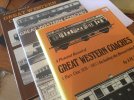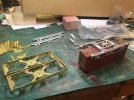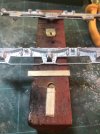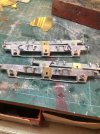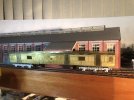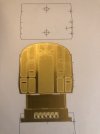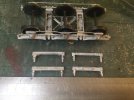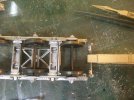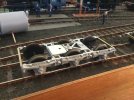Time for some brass. I purchased a multi-hand Blacksmith kit of a diagram M14, 70’ newspaper van some weeks back. The couriers managed to damage the contents despite it being well packed, I suspect the dropped it on one end, from some height, which partially crumpled the ends of the etched body. Frustrating but not too difficult to sort out.
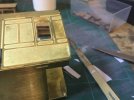
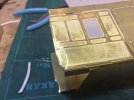
A few taps with a suitable bit of wood onto another bit of wood seems to have sorted it. Any further fettling will be carried out when I assemble. It’s more obvious on the inside than the outside, anyway!
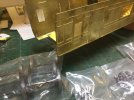
So, apart from the partially pre-formed body, whaddya get?
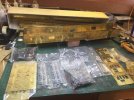
two bogie etches, cast w/m side frames, lots of w/m details for bogie & underframe, preformed roof , etches for ends, mid body formers, buffer beams solebars, steps, trusses, and corridor connectors. And a set of wheels included.
I purchased some milled brass angle at Kettering yesterday from which to make the gutters.
These were “concertina” vehicles in that the doors were flat, sliding inside the curve of the tumblehome. The kit allows for this by providing door reveals as part of the body etch, and separate door etches.
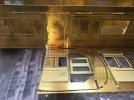
This somewhat arty shot shows both, and suggests that it won’t really work as etched. The doors are consistently 20.2mm wide and the spaces are 21.8. Folding the reveals back will not look great, and there will be a gap to fill where the tumblehome tries to meet the reveals. Compromise time. I guess the doorways are a full 3’ wide, so the doors are marginally too narrow, and the holes are rather too wide. I’m going to make 8 bulkheads from 0.8mm material, to form the reveals, and solder them to the body so the edges show. that will close the gap to a size that the door etches will fill.
Rather than laboriously fretsaw and file to a line, I’ll draw them on CAD, and then CNC mill them when I’ve got time at work. I’ll also make a wooden form on which to panel-beat the tumblehome.
Drawing & photo references, Harris & Russell as usual:
